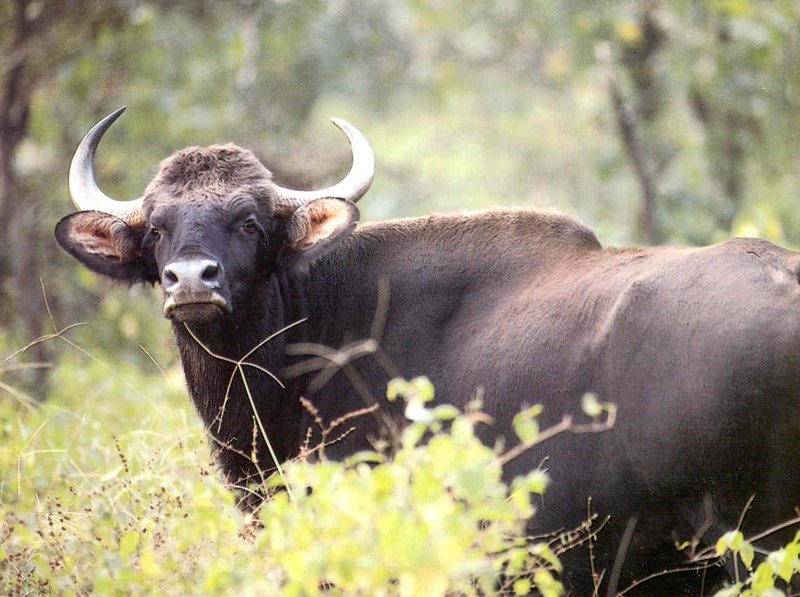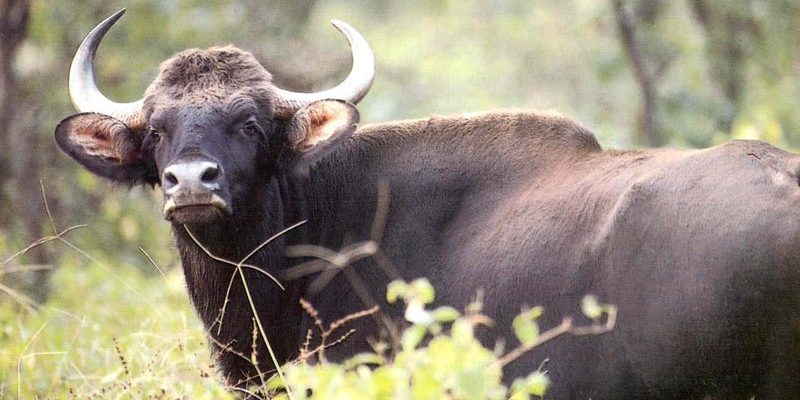
Just like the way forests need trees to thrive, the gaur needs healthy habitats to survive. Unfortunately, deforestation, poaching, and habitat fragmentation are putting a serious strain on their survival. In this article, we’ll explore the conservation status of the gaur, the threats it faces, and what’s being done to protect this majestic animal.
Understanding the Gaur’s Habitat
The gaur is primarily found in the dense forests and grasslands of India, Nepal, Bhutan, and parts of Southeast Asia. Think of it as a giant puzzle piece that fits perfectly into the ecosystem. These habitats provide them with food, water, and shelter. The gaur thrives in areas with ample grazing grounds, like open savannas and forest clearings.
However, as more land is cleared for agriculture and urban development, the gaur’s habitat shrinks. This not only reduces their living space but also leads to *human-animal conflict*. Imagine a family growing crops and suddenly finding a huge gaur trampling through their fields. It’s not a pretty picture and can lead to tensions between wildlife and humans, complicating conservation efforts.
Another worrying factor? The *fragmentation* of their habitat. When forests are cut into smaller patches, it becomes tougher for gaurs to find mates and feed. They’re social creatures, preferring to roam in herds, and when their movements are restricted, it can impact their survival and reproduction.
Current Conservation Status of the Gaur
So, where does the gaur stand in terms of conservation? The *International Union for Conservation of Nature (IUCN)* classifies the gaur as “Vulnerable.” This means that they’re facing a high risk of extinction in the wild if protective measures aren’t stepped up.
In recent years, the gaur population has seen a decline due to several factors, primarily habitat loss and poaching. While precise numbers can be hard to pin down, some estimates suggest there may be only around 13,000 individuals left in the wild. That’s a pretty sobering thought, right? We’re not talking about thousands of animals anymore; we’re talking about a population that could vanish if we don’t act.
But here’s the good news: in some protected areas, like national parks, gaur populations are actually rebounding, thanks to conservation efforts. This shows that with the right focus and resources, we can help stabilize and even increase their numbers.
Threats Facing the Gaur
Let’s break down some of the main threats that are pushing the gaur towards the brink:
- Habitat Loss: As mentioned, deforestation for agriculture and urban development is a huge concern. As these forests disappear, so do the gaurs’ homes.
- Poaching: While poaching might be more commonly associated with larger predators, gaurs are also targeted for their meat and skin. This illegal activity not only impacts their numbers but also disrupts the natural balance of the ecosystem.
- Human-Wildlife Conflict: As human populations grow and expand into wild areas, conflicts become common. Gaurs can damage crops, leading to retaliation from farmers, which can be deadly for these animals.
- Climate Change: Changes in climate patterns can affect the availability of food and water, making survival even trickier for the gaur.
It’s a tough world out there for the gaur, and understanding these threats is key to finding ways to protect them.
Conservation Efforts in Place
Now that we know the challenges, what solutions are in the works? Various organizations and governments are tackling the issue head-on. Here are some of the most important steps being taken:
- Protected Areas: National parks and wildlife sanctuaries play a vital role in conserving the gaur. These areas provide safe havens where they can roam free from poaching and habitat destruction. Places like Nagarhole and Bandipur National Parks in India are examples of such success stories.
- Community Engagement: Local communities are becoming key players in conservation. By involving them in protection efforts and offering alternative livelihoods, conservationists can help reduce human-wildlife conflict.
- Anti-Poaching Initiatives: Governments are deploying ranger patrols and using technology, like drones, to monitor and protect gaur populations from poachers.
- Awareness Campaigns: Increasing public awareness about the gaur’s plight is crucial. Educational programs can encourage people to appreciate these animals and support conservation efforts.
With these combined efforts, there’s hope to steady the gaur population and ensure its future.
How You Can Help
Feeling inspired to make a difference? Here are some simple yet impactful ways you can contribute to gaur conservation:
- Support Wildlife Organizations: Find and support non-profit organizations working specifically for wildlife conservation, particularly those focused on the gaur.
- Spread the Word: Share information about the gaur and its endangered status with friends and family. The more people are aware, the more can be done collectively.
- Visit Protected Areas: If you’re traveling, consider visiting national parks where gaurs are protected. Your entry fees help fund conservation efforts.
Every little bit helps, and together we can create a wave of change for the gaur!
In the grand scheme of wildlife conservation, the gaur’s story is both an alarm bell and a beacon of hope. Yes, they face significant challenges, but with ongoing conservation efforts and community involvement, there’s a fighting chance to turn things around.
Honestly, it takes just one small action combined with the commitment of many to make a real impact. So, as you sip on your coffee, consider how you can be part of the solution to protect these majestic beings. The gaur might just become one of your new favorite conservation success stories!

